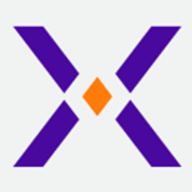

IBM Security QRadar and Securonix Next-Gen SIEM are key players in the SIEM market. While QRadar is known for its comprehensive features inclusive of user behavior analytics supported by Watson, Securonix excels in leveraging machine learning for behavioral analysis and cloud integration, giving Securonix an edge in modern cloud environments.
Features: IBM Security QRadar's standout features include scalability, automatic log source identification, and integrated vulnerability management. The platform's robust app exchange enhances its functionality, enabling customization. QRadar also offers seamless compliance monitoring and reporting capabilities. Securonix Next-Gen SIEM focuses heavily on user behavior analytics and machine-learning algorithms for precise threat detection. It excels in integrating with cloud environments, providing cross-platform data-driven insights. The solution's adaptive security measures make it ideal for preventing insider threats.
Room for Improvement: QRadar requires improvements in incident management and third-party integration. Users report a need for better APIs and user interface enhancements to streamline operations. There is also a desire for improved vulnerability scanning features. Securonix can enhance its third-party tool integrations and incident response times. Users find the dashboard customization features limited and seek an easier initial deployment process. Both platforms need to address false positives and real-time anomaly detection to enhance reliability.
Ease of Deployment and Customer Service: QRadar offers diverse deployment models including on-premises and cloud options, which cater to different organizational needs, though its technical support experiences mixed reviews due to slow response times for complex issues. Securonix provides both on-premises and cloud-based deployment with generally praised customer service for responsiveness, yet faces initial deployment complexities which could benefit from improved support. Both solutions recognize the need for more comprehensive regional support services.
Pricing and ROI: QRadar's pricing model, based on events per second, positions it as a costlier solution, justified by its comprehensive feature set that users find brings a good return on investment through operational efficiencies. In contrast, Securonix's pricing, based on user count, is seen as competitive among market leaders, appealing to larger organizations seeking advanced analytics at predictable costs, though QRadar's cost can hinder smaller enterprises from adopting it.
With SOAR, the workflow takes one minute or less to complete the analysis.
Investing this amount was very much worth it for my organization.
The solution is time-saving, particularly in the long run after it is deployed, enabling us to get value promptly.
They assist with advanced issues, such as hardware or other problems, that are not part of standard operations.
Support needs to understand the issue first, then escalate it to the engineering team.
The support is really good; for instance, if a critical ticket is submitted, you will get paged right away as it gets logged, and their analyst will look into it, letting you know as soon as possible so you can work on it.
There is no UK-based support, which leads to delays in waiting for US support.
If I raise a ticket, it initially goes to the L1 team, but the next level of escalation is really effective.
They excel in response times and quick reactions when there's an actual threat.
For EPS license, if you increase or exceed the EPS license, you cannot receive events.
I can rate it around eight to nine, and it is very scalable and capable of handling tasks, especially for the on-premises product.
We have not had any customers come back to say they cannot scale at the speed of their business growth.
The solution is scalable as it is cloud-based and cloud-native.
I think QRadar is stable and currently satisfies my needs.
The product has been stable so far.
The stability of Securonix Next-Gen SIEM is based on the events we are processing.
We receive logs from different types of devices and need a way to correlate them effectively.
If AI-related support can suggest rules and integrate with existing security devices like MD, IPS, this SIM can create more relevant rules.
IBM Security QRadar does not support Canvas, so we had to create custom scripts and workarounds to pull logs from Canvas.
At the admin level, we have many challenges where log parsing is causing issues and compatibility is not present.
The passing and setup are quite complex at the beginning, making onboarding not smooth.
SIEM could have better integration with other technologies.
Splunk is more expensive than IBM Security QRadar.
It was costly mainly because of the value you can get right now compared to other solutions.
Licensing is based on events per second (EPS), costing between $50 to $60 per EPS.
The solution is definitely not expensive.
The pricing has similar ingestion charges compared to other solutions, such as Splunk.
Recently, I faced an incident, a cyber incident, and it was detected in real time.
IBM is seeking information about IBM QRadar because a part of QRadar, especially in the cloud, has been sold to Palo Alto.
We have FortiSOAR and IBM Resilient for IBM Security QRadar orchestration.
The software includes user behavior interactions, dashboards, and training capabilities.
Now, the process is automatic, reducing our workload.
The other SIEM solutions lack an option for big data analysis, whereas in the Securonix Next-Gen SIEM, we have this option.
| Product | Market Share (%) |
|---|---|
| IBM Security QRadar | 7.0% |
| Securonix Next-Gen SIEM | 1.1% |
| Other | 91.9% |


| Company Size | Count |
|---|---|
| Small Business | 89 |
| Midsize Enterprise | 36 |
| Large Enterprise | 102 |
| Company Size | Count |
|---|---|
| Small Business | 10 |
| Midsize Enterprise | 5 |
| Large Enterprise | 19 |
IBM Security QRadar (recently acquired by Palo Alto Networks) is a security and analytics platform designed to defend against threats and scale security operations. This is done through integrated visibility, investigation, detection, and response. QRadar empowers security groups with actionable insights into high-priority threats by providing visibility into enterprise security data. Through centralized visibility, security teams and analysts can determine their security stance, which areas pose a potential threat, and which areas are critical. This will help streamline workflows by eliminating the need to pivot between tools.
IBM Security QRadar is built to address a wide range of security issues and can be easily scaled with minimal customization effort required. As data is ingested, QRadar administers automated, real-time security intelligence to swiftly and precisely discover and prioritize threats. The platform will issue alerts with actionable, rich context into developing threats. Security teams and analysts can then rapidly respond to minimize the attackers' strike. The solution will provide a complete view of activity in both cloud-based and on-premise environments as a large amount of data is ingested throughout the enterprise. Additionally, QRadar’s anomaly detection intelligence enables security teams to identify any user behavior changes that could be indicators of potential threats.
IBM QRadar Log Manager
To better help organizations protect themselves against potential security threats, attacks, and breaches, IBM QRadar Log Manager gathers, analyzes, preserves, and reports on security log events using QRadar Sense Analytics. All operating systems and applications, servers, devices, and applications are converted into searchable and actionable intelligent data. QRadar Log Manager then helps organizations meet compliance reporting and monitoring requirements, which can be further upgraded to QRadar SIEM for a more superior level of threat protection.
Some of QRadar Log Manager’s key features include:
Reviews from Real Users
IBM Security QRadar is a solution of choice among users because it provides a complete solution for security teams by integrating network analysis, log management, user behavior analytics, threat intelligence, and AI-powered investigations into a single solution. Users particularly like having a single window into their network and its ability to be used for larger enterprises.
Simon T., a cyber security services operations manager at an aerospace/defense firm, notes, "The most valuable thing about QRadar is that you have a single window into your network, SIEM, network flows, and risk management of your assets. If you use Splunk, for instance, then you still need a full packet capture solution, whereas the full packet capture solution is integrated within QRadar. Its application ecosystem makes it very powerful in terms of doing analysis."
A management executive at a security firm says, "What we like about QRadar and the models that IBM has, is it can go from a small-to-medium enterprise to a larger organization, and it gives you the same value."
Securonix Next-Gen SIEM is a security information and event management solution designed to provide advanced threat detection, response, and compliance capabilities. It leverages machine learning and big data analytics to offer a comprehensive security platform for modern enterprises.
Securonix Next-Gen SIEM utilizes advanced analytics and machine learning to detect complex threats that traditional SIEM solutions might miss. Its architecture is built on Hadoop, enabling scalability and the processing of large volumes of data in real-time. This allows organizations to gain deep insights into security incidents, prioritize threats, and automate response actions. The solution also includes behavior analytics to detect insider threats and unknown attacks, integrating seamlessly with existing IT infrastructure.
What are the critical features of Securonix Next-Gen SIEM?
What is the ROI expectations?
Securonix Next-Gen SIEM is implemented across various industries, including finance, healthcare, and retail. Its flexibility and advanced analytics capabilities make it suitable for environments with complex security needs. In finance, it helps detect fraud, while in healthcare, it ensures patient data security. In retail, it protects against data breaches and payment fraud.
In summary, Securonix Next-Gen SIEM offers advanced threat detection, scalability, and integration capabilities, making it a robust solution for modern enterprises.
We monitor all Security Information and Event Management (SIEM) reviews to prevent fraudulent reviews and keep review quality high. We do not post reviews by company employees or direct competitors. We validate each review for authenticity via cross-reference with LinkedIn, and personal follow-up with the reviewer when necessary.